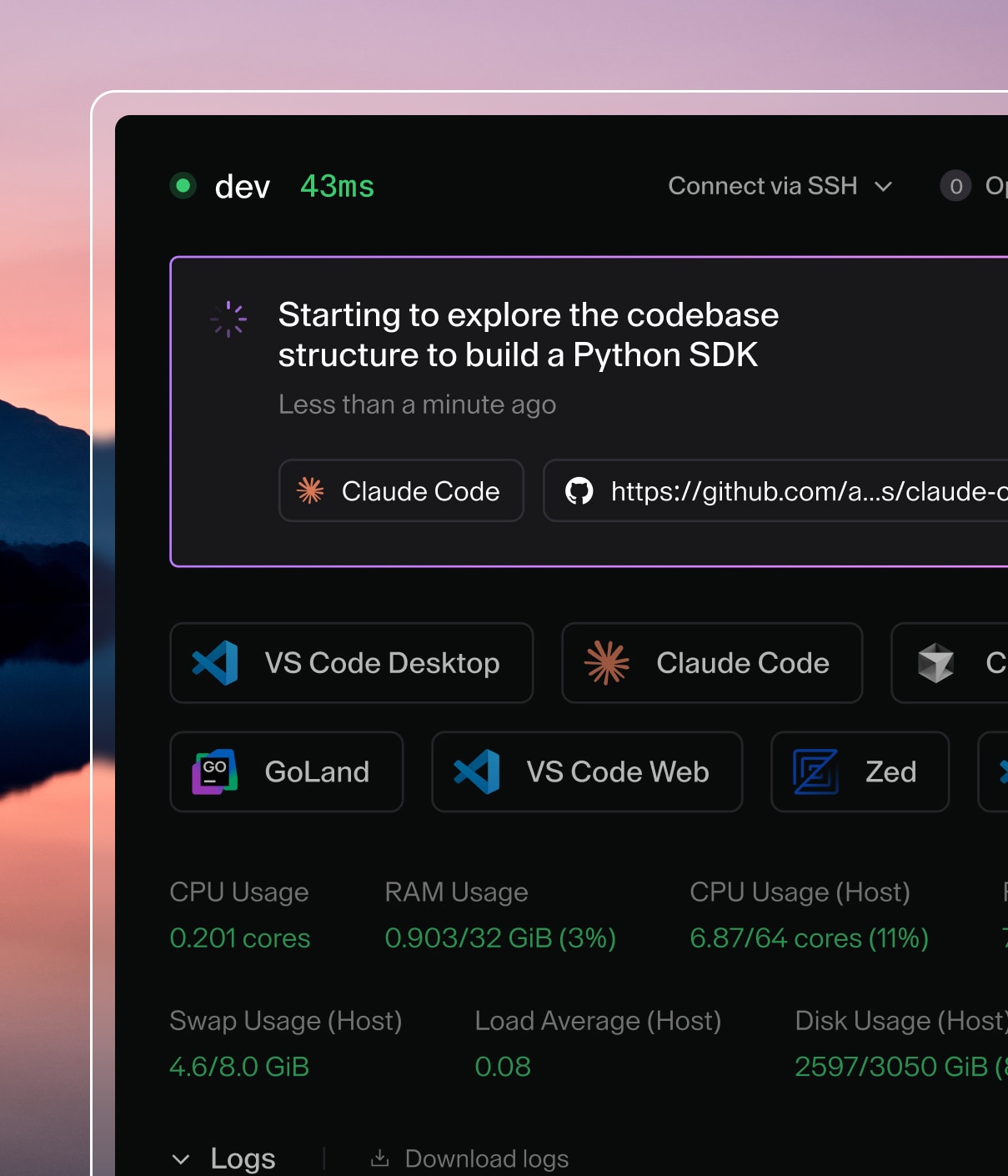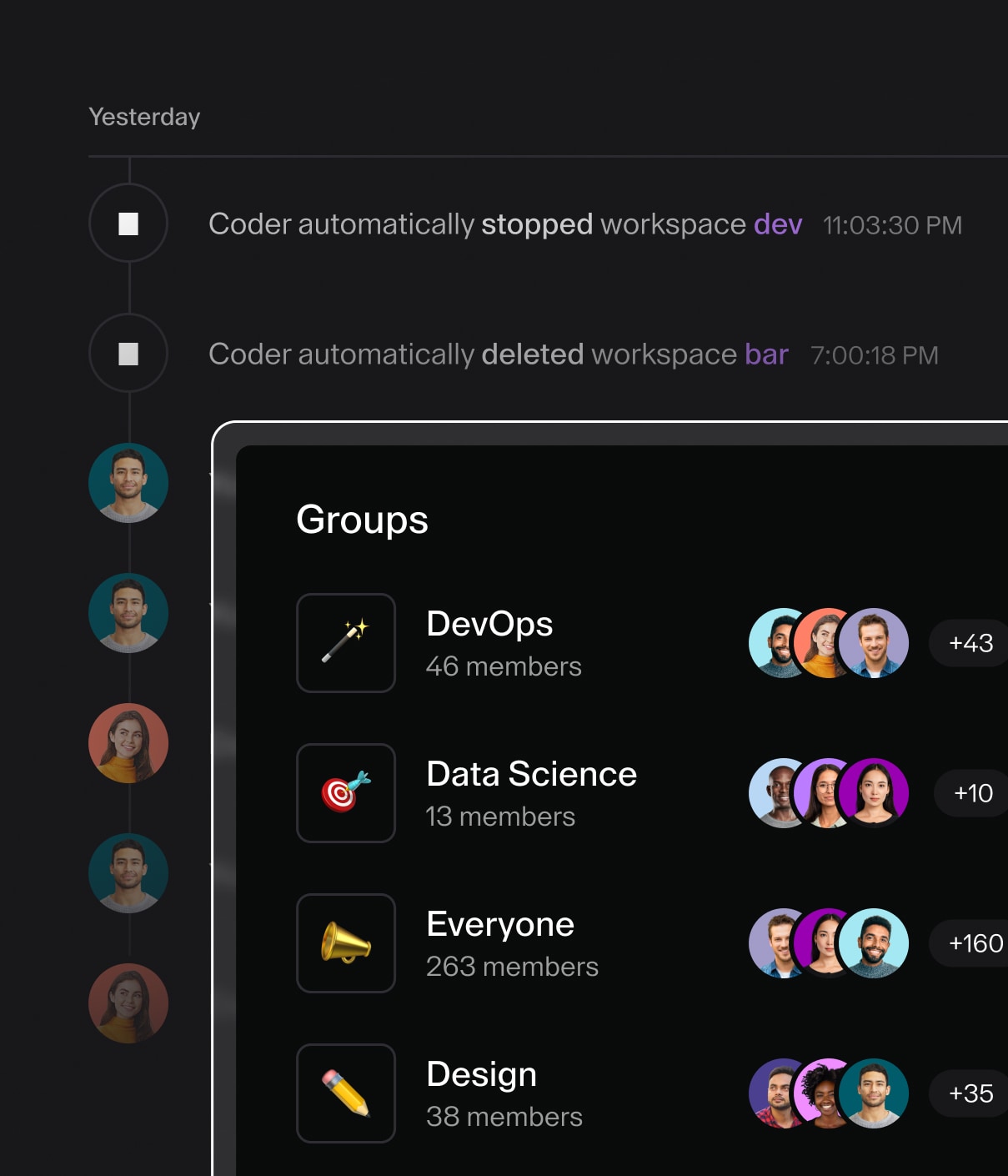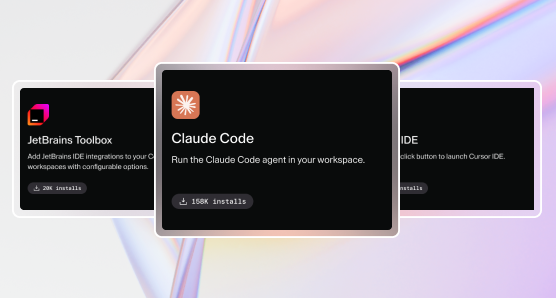Why Cloud Development Environments Are Critical for Autonomous Driving Pioneers

The autonomous driving industry operates at the intersection of cutting-edge AI research and mission-critical safety requirements. Organizations developing autonomous vehicle technology face unique development challenges that traditional software environments weren't designed to handle. From processing petabytes of sensor data to deploying AI models that must perform flawlessly in real-world scenarios, these companies need development infrastructure that can scale, secure, and accelerate their innovation cycles.
The GPU imperative: Why cloud makes sense
Autonomous driving organizations have universally embraced a fundamental truth: GPU-accelerated computing isn't optional, it's essential. Modern perception models require massive computational resources, with some organizations processing over 1.6 petabytes of sensor data daily from just 50 vehicles.
Training perception models with multicamera inputs can easily exceed the limits of even high-end GPU memory, requiring sophisticated distributed training approaches. For most autonomous driving organizations, maintaining the necessary GPU infrastructure on-premises would require massive capital expenditure and ongoing operational complexity.
Cloud adoption solves this elegantly. Organizations can access the latest GPU hardware without the burden of procurement, maintenance, or rapid depreciation cycles. This approach allows teams to scale compute resources dynamically based on project needs, whether training new perception models or running large-scale simulation workloads.
Security without compromise: Air-gapped development
Perhaps the most critical requirement for autonomous driving organizations is maintaining strict security controls while leveraging cloud resources and exploring agentic AI. These teams handle extremely sensitive intellectual property, from proprietary algorithms to detailed mapping data, that must be protected from external access.
Air-gapped development environments provide the solution. Unlike traditional cloud development platforms, air-gapped systems create completely isolated network environments where code, data, and models never leave the organization's security perimeter. This enables teams to leverage cloud-scale compute resources while maintaining the security posture required for autonomous vehicle development.
Accelerating innovation with pre-configured environments
Autonomous driving organizations aren't building traditional web applications, they're developing complex AI systems that require specialized toolchains, frameworks, and dependencies. Setting up development environments for computer vision, sensor fusion, and deep learning workloads can take weeks when done manually.
Development environment templates that can be version-controlled and deployed consistently across teams eliminate this friction entirely. Instead of spending time configuring TensorFlow, PyTorch, CUDA drivers, and specialized autonomous driving frameworks, developers can provision fully-configured workspaces through infrastructure-as-code definitions. These declarative templates can include:
- Pre-installed AI/ML frameworks optimized for autonomous driving workloads
- Configured data pipelines for sensor data processing
- Integrated simulation environments for testing algorithms
- Standardized toolchains for model deployment and optimization
This infrastructure-as-code approach ensures that every developer gets an identical, production-ready environment while allowing DevOps teams to maintain and update configurations centrally.
Real-time testing: From cloud to edge
One of the most unique aspects of autonomous driving development is the need for real-time testing on actual vehicles. Code developed in cloud environments must ultimately run on edge computing systems installed in trucks, cars, and other autonomous vehicles.
Modern cloud development environments support this workflow through deployment pipelines that can push code directly to edge devices for real-world testing. This capability is essential for autonomous driving companies testing algorithms on trucks and cars in real-world conditions.
The cultural factor: Attracting top talent
Beyond technical requirements, autonomous driving organizations compete fiercely for top AI and robotics talent. A 2025 industry report analyzing over 1,500 open roles across 40 leading companies highlights strong demand for expertise in machine learning, computer vision, and sensor processing. Providing access to state-of-the-art cloud development environments isn’t just operationally beneficial, it signals that an organization is at the forefront of innovation, fostering a culture that appeals to top engineers.
How Coder enables autonomous driving innovation
Coder provides the cloud development environment platform that addresses these specific requirements for autonomous driving organizations. With support for air-gapped deployments, GPU-accelerated workspaces, and infrastructure-as-code templates, Coder enables teams to focus on breakthrough algorithm development rather than environment management.
Autonomous vehicle companies are using Coder to accelerate hardware-in-the-loop (HIL) simulations and test track engineering. These teams run real-time, embedded system development inside the vehicles themselves, often on remote test tracks where the car is the server. Coder lets engineers access and update massive codebases on demand, without needing to return to a data center or wait for traditional CI pipelines. When a vehicle makes a mistake, engineers can analyze the incident, update the software, and deploy changes immediately. What once took days now takes minutes, unlocking faster iteration, lower compute waste, and a safer path to autonomy.
Coder handles components of development environments in such a way that we can focus on what really matters to us. Coder allows us to focus on solving the problems that are unique to our business while providing an enjoyable and easy to use platform for our developers to do their work.
Platform Engineer, Wayve Technology Ltd
Subscribe to our newsletter
Want to stay up to date on all things Coder? Subscribe to our monthly newsletter and be the first to know when we release new things!


